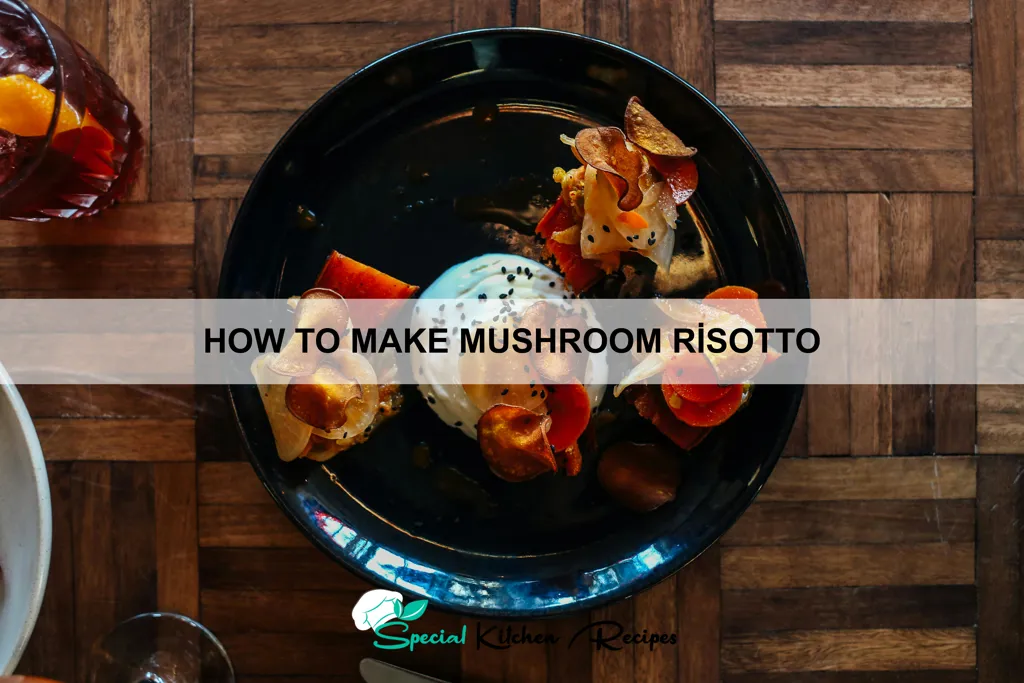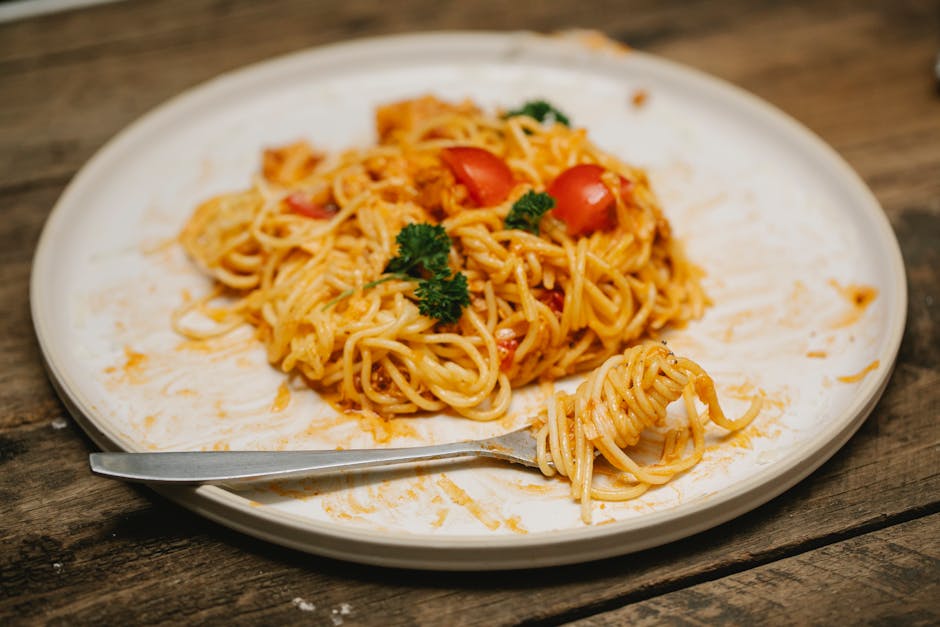Risotto, a creamy, comforting rice dish, holds a special place in Italian cuisine, and its mushroom variation is a particularly beloved classic. While pinpointing the exact origin of risotto is difficult, its roots lie deep within the Northern Italian culinary traditions, particularly in the Lombardy region, dating back centuries. Early versions likely involved simpler ingredients, reflecting the agricultural landscape and readily available produce. The specific incorporation of mushrooms, however, likely evolved over time, with different varieties reflecting regional availability – from earthy porcini in Tuscany to delicate chanterelles in the Piedmont region.
The evolution of risotto mirrors broader changes in Italian food culture. Initially a peasant dish, its popularity grew, transitioning from humble beginnings to a sophisticated culinary staple. Its creamy texture, achieved through a slow, careful cooking process, sets it apart from other rice dishes. Unlike many other rice-based preparations, risotto doesn’t rely on pre-cooked rice; the gradual addition of hot broth is key to its unique consistency. This method, requiring patience and attention, contributes to its perceived elegance and sophistication.
Today, mushroom risotto enjoys widespread popularity, not just in Italy but globally. Statistics show that risotto, in all its variations, ranks highly in restaurant menus worldwide, a testament to its enduring appeal. The versatility of mushrooms, from the common button to the exotic morel, allows for endless variations in flavor profiles. Furthermore, the dish’s adaptability – easily incorporating seasonal vegetables, herbs, or cheeses – contributes to its ongoing evolution. It’s a dish that speaks to both tradition and innovation, a perfect example of how a seemingly simple recipe can achieve both culinary excellence and widespread cultural significance.
Interestingly, the specific type of rice used is crucial to achieving the perfect risotto. Arborio rice, with its high starch content, is the preferred choice for its ability to absorb liquid and create the characteristic creamy texture. Other short-grain varieties can be substituted, but the final consistency might differ slightly. This seemingly small detail underscores the importance of understanding the fundamental principles of this classic dish before embarking on its preparation. This recipe will guide you through the process of creating a delicious and authentic mushroom risotto.
Ingredients and Measurements
This recipe yields approximately 4 servings of creamy, flavorful mushroom risotto. Accurate measurements are crucial for achieving the perfect consistency, so please use a kitchen scale for the best results whenever possible. Volume measurements can be less precise.
Arborio Rice: 1 cup (200g). Arborio rice is essential for creamy risotto. Its high starch content releases during cooking, creating the characteristic creamy texture. Do not substitute with other rice varieties.
Vegetable Broth: 6 cups (1.4 liters). Use homemade or store-bought low-sodium vegetable broth for the best flavor. Keep the broth warm throughout the cooking process. A simmering pot on the stove is ideal. Cold broth will significantly slow down the cooking process and result in a less creamy risotto.
Mushrooms: 1 pound (450g). A mix of mushrooms adds depth of flavor and visual appeal. We recommend using a combination of cremini (brown button), shiitake, and oyster mushrooms. Clean the mushrooms thoroughly with a damp cloth or brush; avoid washing them under running water, as they will absorb too much moisture. Roughly chop the mushrooms into ½-inch pieces.
Shallots: 2 medium (approximately 50g). Finely chop the shallots. Shallots provide a delicate sweetness that complements the earthy mushrooms beautifully. You can substitute with 1 small yellow onion if needed, but shallots are preferred for their milder flavor.
White Wine: ½ cup (120ml). Dry white wine, such as Sauvignon Blanc or Pinot Grigio, adds complexity and acidity to the risotto. If you prefer not to use alcohol, you can substitute with an equal amount of additional warm vegetable broth.
Butter: 4 tablespoons (57g). Unsalted butter is recommended. Use 2 tablespoons for sautéing the shallots and mushrooms, and the remaining 2 tablespoons for enriching the finished risotto. Using good quality butter significantly enhances the overall flavor.
Parmesan Cheese: ½ cup (50g), freshly grated. High-quality, freshly grated Parmesan cheese is crucial for both flavor and texture. Pre-grated cheese often contains cellulose which can affect the creaminess. Reserve some extra for serving.
Olive Oil: 2 tablespoons (30ml). Extra virgin olive oil adds a subtle fruity flavor. Use a high-quality olive oil for the best results.
Fresh Parsley: 2 tablespoons, chopped (for garnish). Fresh parsley adds a touch of freshness and vibrancy to the final dish.
Salt and freshly ground black pepper: To taste. Season generously throughout the cooking process. Taste and adjust seasoning as you go, as this is key to a well-balanced risotto.
Mise en Place (Prepping Ingredients)
Before you even think about starting your risotto, meticulous preparation – mise en place – is key to a smooth and successful cooking process. This ensures everything flows efficiently and prevents last-minute scrambling.
Begin by preparing your vegetables. We’ll need one medium yellow onion (finely diced), two cloves of garlic (minced), and 1 ½ cups of Arborio rice. The onion should be diced as small as possible for even cooking and to prevent large, uncooked pieces in your final dish. For the garlic, mince it finely but be careful not to over-process, as this can lead to bitterness. Properly measuring your rice is crucial; using a kitchen scale is recommended for accuracy.
Next, focus on your mushrooms. This recipe calls for 1 pound of mixed mushrooms (cremini, shiitake, oyster, etc.) – choose your favorites! Clean the mushrooms with a damp cloth or mushroom brush; avoid washing them under running water as this can make them soggy. Then, roughly chop the mushrooms into ½-inch pieces. Larger pieces will require a longer cooking time, ensuring they are tender and flavorful before being added to the risotto.
Prepare your broth. You’ll need about 6 cups of hot vegetable or chicken broth (depending on your preference). Having this pre-heated and ready to pour is essential for maintaining the creamy texture of the risotto. Keep the broth simmering gently throughout the cooking process. If using homemade broth, strain it beforehand to remove any solids.
Finally, gather your remaining ingredients. This includes ½ cup of dry white wine, 4 tablespoons of unsalted butter, ½ cup of grated Parmesan cheese, 2 tablespoons of olive oil, and salt and freshly ground black pepper to taste. Measure out the wine and butter ahead of time to avoid interruptions during the cooking process. Taste your broth and season it lightly with salt before starting, as it will be the base flavor of your risotto.
With all your ingredients measured, chopped, and ready to go, you’ll be able to focus on the cooking process, ensuring a perfectly creamy and flavorful mushroom risotto. Remember, proper mise en place is the foundation of a successful dish!
Sautéing the Aromatics
This crucial first step builds the flavor foundation of your mushroom risotto. We’ll be sautéing aromatics – specifically, shallot and garlic – to release their fragrant oils and create a flavorful base for the mushrooms and rice. Properly sautéing the aromatics prevents burning and ensures a smooth, delicious risotto.
Begin by finely chopping 1 large shallot. Aim for a dice of about 1/4 inch. Too large and they’ll remain crunchy; too small and they might burn before softening. Similarly, mince 2 large cloves of garlic. Don’t skip this step! The garlic adds a depth of flavor that’s essential.
Heat 2 tablespoons of extra virgin olive oil in a large, heavy-bottomed pan over medium heat. A heavy pan distributes heat evenly, preventing hot spots that could burn the aromatics. Medium heat is key; we want to gently soften the shallots and garlic, not brown them.
Add the chopped shallots to the hot oil and cook, stirring occasionally, for about 3-5 minutes, until they become translucent and softened. Don’t rush this process; patience is key to achieving a sweet, mellow shallot flavor. If the shallots start to brown, reduce the heat immediately.
Next, add the minced garlic. Cook for another minute, or until fragrant. Be careful not to burn the garlic, as it will become bitter. The garlic should be fragrant but not browned. Its delicate flavor will be a subtle yet important addition to the overall taste profile of your risotto.
Once the shallots and garlic are softened and fragrant, your aromatics are ready. Remove the pan from the heat to prevent overcooking. The residual heat will continue to cook the aromatics gently. This is a crucial step before adding the mushrooms and rice, ensuring a harmonious blend of flavors.
Pro Tip: For an extra layer of flavor, consider adding a small sprig of fresh thyme or rosemary during the last minute of sautéing the aromatics. Remove the herb before adding the mushrooms and rice.
Toasting the Rice
Toasting the rice is a crucial step in making a truly exceptional risotto. It doesn’t take long, but it significantly impacts the final texture and flavor of your dish. Proper toasting releases the starches in the rice, creating a creamy consistency without the need for excessive amounts of butter or broth. It also helps to prevent the rice from becoming mushy.
For this recipe, we’ll be using 1 ½ cups of Arborio rice, the classic choice for risotto. Arborio’s high starch content is key to achieving that signature creamy texture. Begin by melting 4 tablespoons of unsalted butter in a large, heavy-bottomed pan over medium heat. A heavy-bottomed pan is essential for even heat distribution, preventing burning and ensuring the rice toasts evenly.
Once the butter is melted and shimmering, add the 1 ½ cups of Arborio rice to the pan. Stir constantly with a wooden spoon or spatula for approximately 3-5 minutes. Continuous stirring is vital to prevent the rice from sticking and burning. You’ll notice the rice grains becoming translucent around the edges and slightly fragrant.
The goal is to toast the rice until it’s lightly golden and has a slightly nutty aroma. Don’t be tempted to rush this process; it’s better to toast the rice slowly and evenly. If the rice begins to brown too quickly, reduce the heat slightly. If the rice seems to be sticking despite constant stirring, add a tablespoon or two of dry white wine to deglaze the pan and help loosen the rice.
Once the rice is toasted, it will be ready for the next step: adding the liquid. The toasted rice will absorb the broth more effectively, resulting in a richer, creamier risotto. Remember, the slight nutty aroma and translucent edges are your indicators of perfectly toasted rice. At this point, your risotto is well on its way to becoming a delicious masterpiece!
Adding Broth Gradually
The key to creamy, perfectly cooked risotto lies in the gradual addition of the broth. This slow process allows the rice to absorb the liquid fully, creating that signature creamy texture. We’ll be using approximately 6 cups (1.4 liters) of hot, preferably homemade, vegetable or chicken broth for this recipe. If using store-bought broth, ensure it’s warmed through before starting.
Begin by adding about 1 ½ cups (355 ml) of the hot broth to the pot with the sautéed mushrooms and onions. Stir gently to combine, ensuring all the rice is coated in the liquid. Do not add all the broth at once! This will result in mushy risotto instead of the desired creamy texture.
Cook the rice, stirring frequently, until the liquid is almost completely absorbed. This will take approximately 3-5 minutes. The stirring is crucial; it releases the starch from the rice grains, contributing to the creamy consistency. Use a wooden spoon or spatula for best results. Consistent stirring prevents sticking and ensures even cooking.
Once the first addition of broth is nearly absorbed, add another ½ cup (120 ml) of hot broth. Continue stirring constantly until the liquid is absorbed. Repeat this process, adding ½ cup (120 ml) of broth at a time, stirring continuously until each addition is absorbed before adding more. This gradual addition is essential for achieving the perfect al dente texture of the rice.
Patience is key during this stage. Don’t rush the process. It should take approximately 20-25 minutes for the rice to cook completely and absorb all the broth. The risotto is ready when the rice is cooked through but still has a slight bite to it (al dente). If the risotto seems too thick at any point, add a little more broth, a tablespoon at a time, until you reach your desired consistency.
Taste the risotto frequently as you add the broth. Adjust seasoning (salt and pepper) as needed throughout the cooking process. You may also want to add a splash of white wine at this stage for extra flavour, adding it along with one of your broth additions.
By following these steps and paying close attention to the rice and broth absorption, you’ll create a delicious, creamy mushroom risotto that will impress your guests. Remember, the gradual addition of broth is the secret to success!
Stirring and Monitoring Consistency
The key to a creamy, perfectly textured mushroom risotto lies in diligent stirring and careful monitoring of the consistency. This process requires patience and attention to detail, but the reward is a risotto that is far superior to one made with less care.
Begin by stirring the risotto frequently, at least every 30 seconds, especially during the initial stages when the rice is toasting in the butter and oil. This prevents the rice from sticking to the bottom of the pan and ensures even cooking. Use a wooden spoon or spatula, scraping the bottom of the pan with each stir to lift any browned bits and incorporate them into the creamy sauce. Avoid using a whisk, as it can break down the rice grains, resulting in a mushy texture.
As you add the hot broth, continue stirring constantly. Add approximately 1 cup (240ml) of broth at a time, stirring continuously until the liquid is almost completely absorbed before adding the next cup. This gradual addition of liquid allows the rice to release its starch, creating the characteristic creamy texture. Don’t rush this process; it takes time for the rice to absorb the liquid properly.
The consistency you’re aiming for is *al dente*. The rice should be cooked through but still have a slight bite to it – not mushy or overly firm. To check, take a grain of rice and gently press it between your thumb and forefinger. It should offer a slight resistance. If it’s too firm, continue adding broth and stirring until it reaches the desired consistency. If it’s too soft, you may have added too much liquid at once. Adjust the amount of broth added based on the absorbency of your rice and the heat of your stovetop.
Throughout the cooking process, keep a close eye on the risotto. The heat should be maintained at a gentle simmer; too high a heat will scorch the rice and create a burnt taste. Adjust the heat as needed to maintain a slow, even simmer. If the risotto becomes too thick, add a splash more broth to loosen it. If it’s too thin, simply continue to simmer and stir until it thickens to your liking.
Finally, once the rice is cooked to your liking and the risotto has reached a creamy consistency, remove it from the heat and stir in the grated Parmesan cheese and butter. This adds richness and further enhances the creamy texture. Stir gently to incorporate the cheese and butter without overworking the risotto. Serve immediately and enjoy your perfectly cooked mushroom risotto!
Recommendations
For the best tasting Mushroom Risotto, use high-quality Arborio rice. Its starchiness is key to achieving the creamy texture. Don’t rinse the rice before cooking, as the starch is crucial for the risotto’s consistency. Add the broth gradually, stirring constantly, ensuring each addition is absorbed before adding more. This slow process allows the rice to release its starch and create that signature creamy texture.
Taste and adjust seasoning throughout the cooking process. Don’t be afraid to add more salt, pepper, or even a squeeze of lemon juice to enhance the flavors. The mushrooms themselves will impart a savory depth, but feel free to experiment with different types of mushrooms for varied tastes and textures.
Serving suggestions are abundant! A simple sprinkle of freshly grated Parmesan cheese is classic, but you can also add a drizzle of truffle oil for an extra luxurious touch. Fresh herbs like parsley or chives add a pop of freshness and color. Consider topping with crispy fried sage leaves for an elegant presentation and contrasting texture.
Storage: Leftover risotto is best stored in an airtight container in the refrigerator for up to 2 days. Reheat gently on the stovetop with a splash of broth or water to restore its creamy consistency. Avoid microwaving, as it can make the risotto dry and grainy.
Complementary dishes include a simple green salad with a light vinaigrette to balance the richness of the risotto. A grilled piece of chicken or fish would pair beautifully, as would a roasted vegetable medley. For a truly indulgent meal, consider serving it alongside a glass of dry white wine.
Nutritional Information (per serving, approximate): Calorie count will vary depending on the ingredients and portion size, but a typical serving might contain around 400-500 calories. It’s a good source of carbohydrates from the rice, and provides dietary fiber and various vitamins and minerals from the mushrooms. The exact nutritional breakdown will depend on the specific mushrooms used and the amount of cheese added. Note: This is an estimate and may differ based on specific recipe variations.
Important Note: Always ensure your mushrooms are thoroughly cleaned before using them. If you are unsure about the edibility of wild mushrooms, always consult a mycologist before consumption. Enjoy your delicious homemade Mushroom Risotto!





